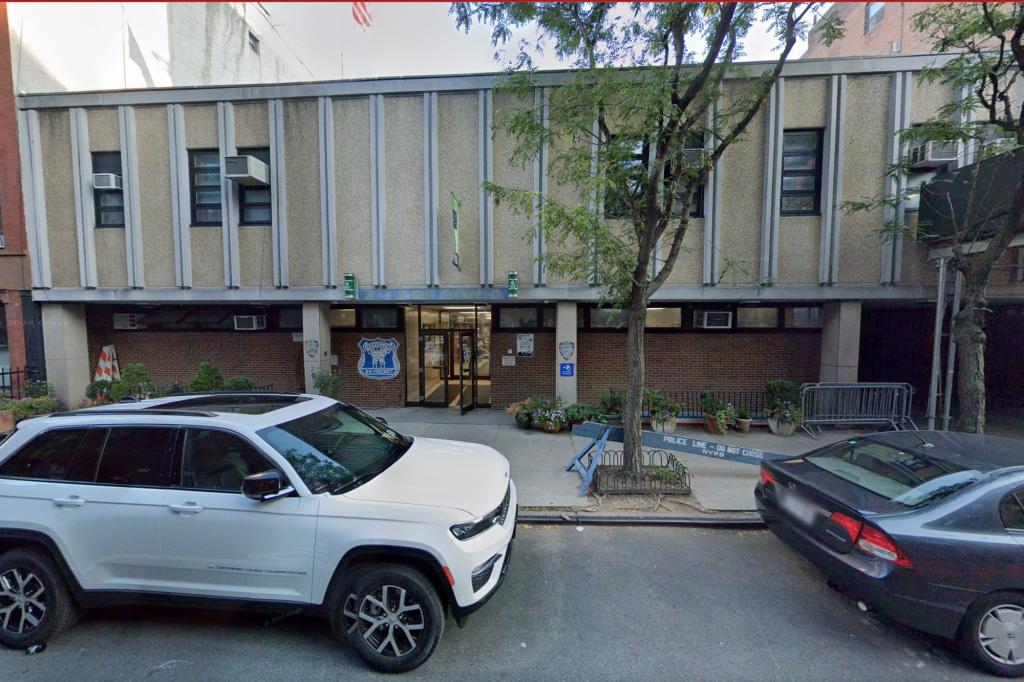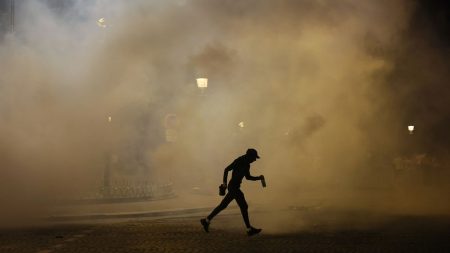The discovery of a mysterious liquid-filled jug outside the 6th Precinct station house in Manhattan’s West Village triggered a swift and comprehensive response from law enforcement, underscoring the ever-present threat of hazardous materials incidents in urban environments. The gallon-sized glass container, accompanied by a chilling note warning about the dangers of chlorine gas, immediately raised concerns about a potential chemical attack. The incident, occurring around 8:30 PM, prompted the NYPD to establish a wide perimeter around the precinct, effectively shutting down several blocks and disrupting the usual flow of evening activity in the bustling neighborhood. The NYPD’s Emergency Service Unit, a specialized team trained to handle hazardous materials, quickly arrived on scene, donning protective gear and meticulously examining the jug’s contents. The immediate area was evacuated as a precaution, emphasizing the seriousness with which authorities treated the potential threat.
The investigation into the incident swiftly unfolded on multiple fronts. NYPD detectives, along with members of the FBI and the Department of Homeland Security, launched a comprehensive effort to identify the individual responsible for placing the jug. Surveillance footage from the area was scrutinized for clues, and witnesses were interviewed in an attempt to glean any information about the suspect. The note accompanying the jug, with its ominous warning about chlorine gas, became a focal point of the investigation. Handwriting analysis was likely conducted, and the language used in the note was carefully examined for any potential insights into the suspect’s motivations or background. The possibility of the incident being a hoax was also considered, though investigators proceeded with the utmost caution, treating the situation as a credible threat until proven otherwise.
The meticulous process of identifying the liquid inside the jug was central to the investigation. Samples were carefully collected by the Emergency Service Unit and transported to a specialized laboratory for analysis. Experts employed various chemical tests to determine the precise composition of the liquid, looking for any traces of chlorine or other hazardous substances. The type of container used, a glass gallon jug, was also examined for any markings or characteristics that might help trace its origin. While awaiting the laboratory results, investigators developed contingency plans based on various possible scenarios, ranging from a relatively harmless substance to a highly toxic chemical agent. The uncertainty surrounding the jug’s contents added another layer of complexity to the already tense situation.
As the investigation progressed, the initial fear of a chlorine gas attack began to dissipate. Preliminary tests indicated that the liquid inside the jug was not chlorine gas, alleviating concerns about an immediate chemical threat. Further analysis revealed that the substance was likely a mixture of common household chemicals, posing no significant danger to the public. This revelation shifted the focus of the investigation from a potential act of terrorism to a possible hoax or an act of misguided mischief. While the diminished threat level allowed for the reopening of the surrounding streets and the easing of immediate security concerns, the investigation continued in earnest to identify the individual responsible and determine their motives.
The identification of the suspect proved to be a significant breakthrough in the case. Through painstaking investigative work, including analysis of surveillance footage and witness interviews, law enforcement identified and apprehended a suspect connected to the incident. The individual, whose identity was not initially released, was taken into custody for questioning. The arrest brought a sense of relief to the community and underscored the dedication of law enforcement to ensuring public safety. The suspect’s motives remained unclear, and investigators continued to explore various possibilities, ranging from a prank gone wrong to a more deliberate attempt to cause alarm. Determining the true intent behind the act became a key objective of the ongoing investigation.
The incident serves as a stark reminder of the vulnerability of urban areas to potential threats, even those that ultimately prove to be hoaxes. The rapid and coordinated response of law enforcement, the meticulous handling of the potential hazardous material, and the comprehensive investigation demonstrate the preparedness and dedication of agencies like the NYPD, FBI, and Department of Homeland Security. The incident also highlights the importance of public vigilance and cooperation in such situations. While the specific motivations behind this incident remain under investigation, it underscores the need for continued vigilance and preparedness in the face of evolving threats in the urban landscape. The swift resolution of the case, from initial alarm to the apprehension of a suspect, showcases the effectiveness of collaborative law enforcement efforts and the importance of treating every potential threat with the utmost seriousness.










